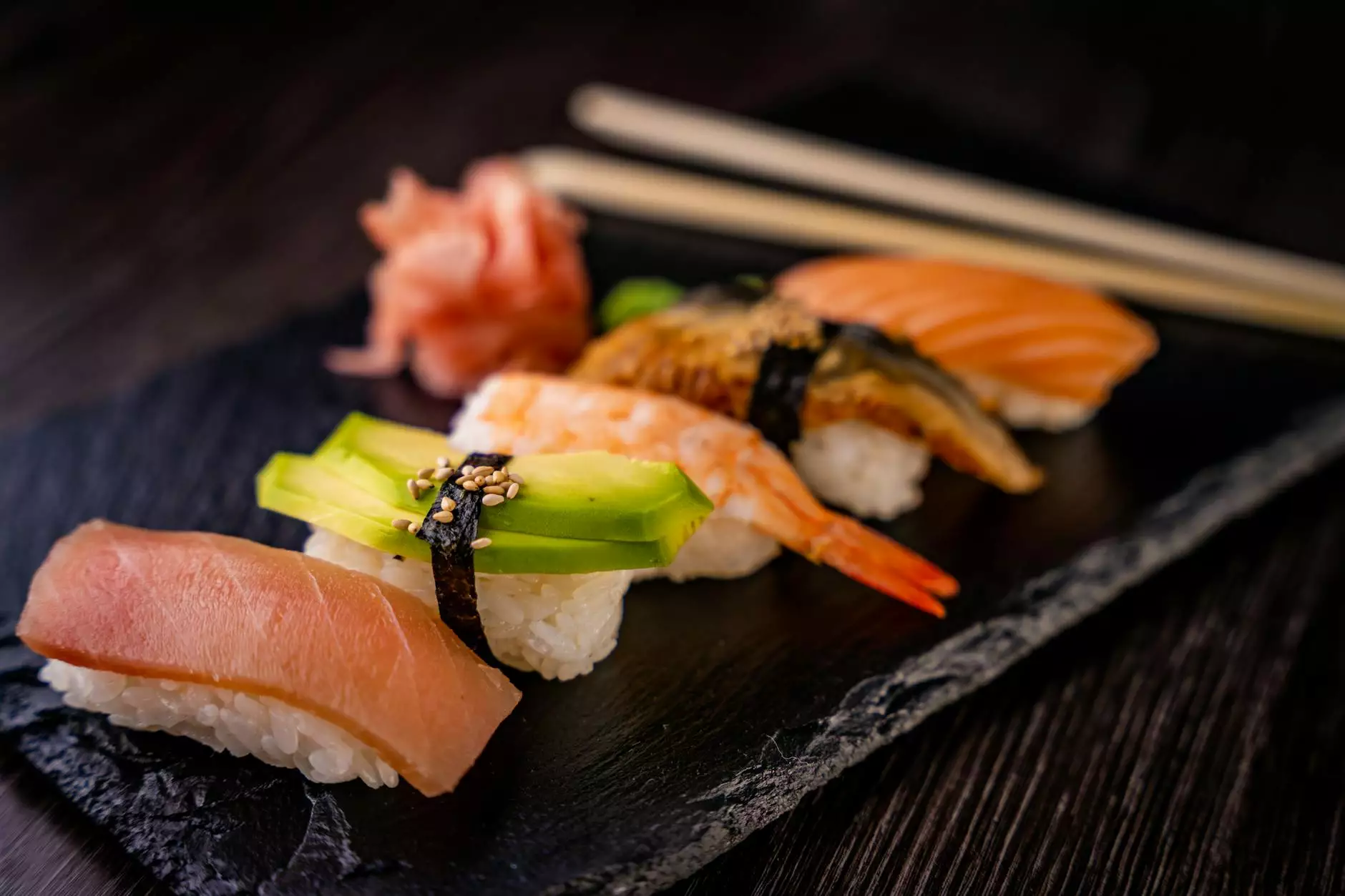The Allure of the Japanese Wasabi Plant: A Culinary Delight

The Japanese wasabi plant, known scientifically as Wasabia japonica, is much more than just a condiment; it is an integral part of Japanese cuisine and culture. This article explores the uniqueness of the wasabi plant, its cultivation, its culinary significance, and its health benefits, providing a comprehensive understanding of why it is highly sought after in restaurants and sushi bars around the world.
What is the Japanese Wasabi Plant?
The Japanese wasabi plant is a perennial plant native to Japan's cool, mountainous regions. It thrives in moist, shady environments, typically found growing alongside fast-flowing streams. The wasabi plant is known for its distinctive green rhizome, which is the part commonly used in culinary applications.
Characteristics of the Japanese Wasabi Plant
- Appearance: Wasabi plants feature broad, heart-shaped leaves that can grow quite large, making them visually striking in any garden.
- Growth Conditions: They require specific conditions to flourish, including plenty of water and shade, often cultivated in permaculture systems alongside fish farms.
- Flavor Profile: The taste of authentic wasabi is complex, with a fresh, pungent heat that is distinct from the spiciness of horseradish, providing a unique experience for diners.
The Culinary Significance of Wasabi
In Japanese cuisine, the Japanese wasabi plant is primarily used to prepare wasabi paste, which complements sushi and sashimi beautifully. However, its applications extend far beyond just sushi bars. Here are some ways wasabi enhances culinary experiences:
Common Uses of Wasabi in Cuisine
- Sushi and Sashimi: A staple accompaniment, wasabi adds a spicy kick that balances the flavors of fresh fish.
- Dressings and Sauces: Chefs incorporate wasabi into vinaigrettes and marinades for a zesty flavor enhancement.
- Gourmet Dishes: Wasabi is used in upscale recipes, from grilled meats to seafood dishes, to elevate taste profiles.
- Snacks: Wasabi peas and other snacks have become popular for their unique flavor and addictive crunch.
Health Benefits of the Japanese Wasabi Plant
The health benefits associated with the Japanese wasabi plant are compelling reasons to include it in one's diet. Here are several notable health advantages:
1. Rich in Nutrients
Wasabi is low in calories yet packed with essential nutrients, including vitamins C and B6, potassium, and calcium. Its nutrient profile supports overall health.
2. Anti-Inflammatory Properties
Wasabi contains anti-inflammatory compounds that can help reduce inflammation in the body. This property may be beneficial for those suffering from chronic illnesses.
3. Antimicrobial Effects
The compounds in wasabi possess natural antimicrobial properties, which can help inhibit the growth of harmful bacteria in food. This makes it an especially suitable companion for raw fish dishes.
4. Cancer-Fighting Potential
Research suggests that wasabi may contain certain compounds that can combat cancerous cells and prevent tumor growth. While more studies are needed, the potential is promising.
Misconceptions About Wasabi
One common misconception is that the green paste served at restaurants is genuine wasabi. In reality, many establishments use a mixture of horseradish, mustard, and food coloring as a substitute. True wasabi, derived from the Japanese wasabi plant, is much rarer and typically more expensive due to its difficult cultivation process.
How to Identify Real Wasabi
To distinguish genuine wasabi from imitation products, consider the following tips:
- Color: True wasabi has a vibrant green color without any greyish undertones.
- Texture: Ground wasabi has a smooth, creamy texture, unlike the gritty feel of horseradish-based substitutes.
- Flavor: Authentic wasabi offers a fresh, mild heat that dissipates quickly compared to the lingering punch of horseradish.
Growing Your Own Japanese Wasabi Plant
For cooking enthusiasts and gardening aficionados, growing your own Japanese wasabi plant can be an exciting and rewarding venture. Here’s how to start:
1. Location and Soil Requirements
Choose a shaded area with moist, well-drained soil. Wasabi plants prefer slightly acidic to neutral pH levels (around 6-7). Adding organic matter can enhance soil quality.
2. Planting
Wasabi can be propagated from rhizomes. Plant a piece with at least one growth node about 1-2 inches deep in the soil, ensuring it receives consistent moisture.
3. Care and Maintenance
Regularly check water levels, as wasabi thrives in moist environments. Avoid overwatering; the soil should be damp but not soggy. Fertilizing with a balanced organic fertilizer can promote healthy growth.
4. Harvesting
Typically, wasabi can take about 2-3 years to mature. The rhizome is ready for harvest when it has reached a desirable size, usually around 6-8 inches long. Carefully dig it up without damaging the roots.
Incorporating Wasabi into Modern Cuisine
As the culinary world evolves, the use of the Japanese wasabi plant has expanded into modern gourmet dishes and innovative recipes. Chefs around the globe are experimenting with wasabi, integrating it into new and exciting creations.
Creative Uses of Wasabi in Contemporary Dishes
- Wasabi Butter: A unique twist for seafood dishes and steak.
- Wasabi Mashed Potatoes: Adding a spicy kick to this classic comfort food.
- Wasabi-infused Oils: Ideal for dressings and marinades.
- Wasabi Desserts: Innovative chefs are even exploring wasabi in sweets, pairing it with chocolate or ice cream for unexpected flavor combinations.
Conclusion: The Enduring Legacy of the Japanese Wasabi Plant
From its unique growing conditions to its vibrant role in culinary traditions, the Japanese wasabi plant is a remarkable example of nature's offerings. Its rich flavor, coupled with myriad health benefits, makes it an essential ingredient in both traditional and modern cuisine.
As we explore the depths of Japanese culinary arts, the wasabi plant stands out, reminding us that authentic ingredients always elevate the dining experience. Whether you are enjoying sushi in a sushi bar or experimenting in your own kitchen, the allure of wasabi will continue to inspire and delight food lovers everywhere.
For the finest wasabi products and culinary experiences, don’t forget to visit realwasabi.com!









